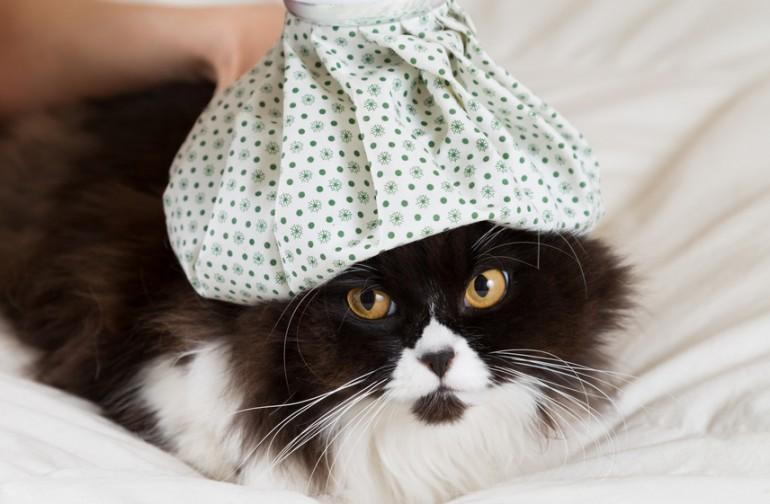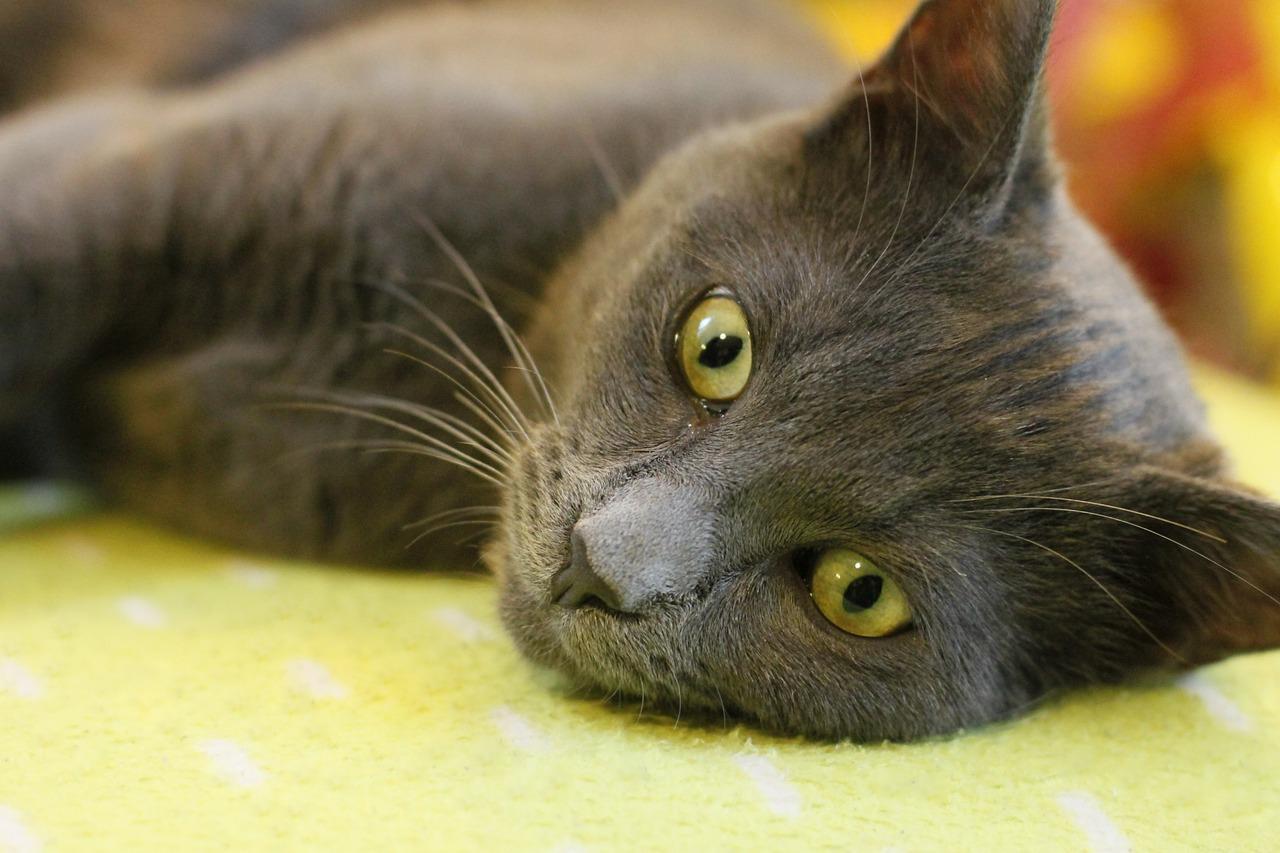Fever in Cats

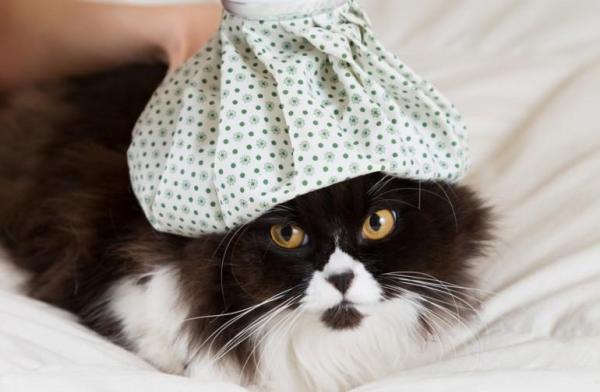

See files for Cats
The normal body temperature in cats fluctuates between 38ºC and 39.5ºC (100.4ºF and 103.1ºF). When the internal body temperature of a cat exceeds this top parameter they have a fever. A cat will have a fever due to their health being impaired, usually due to their body fighting an infection of some sort. Regardless of the initial cause, fever is a symptom of some disease or disorder and determining the cause may be imperative if they need immediate treatment.
It is important to bear in mind that a cat with fever doesn't necessarily mean the presence of a life threatening illness. However, equally we need to be aware that fever can be the symptom of something serious. Determining the cause means that you can know whether your cat needs further examination and potentially emergency care. This is why AnimalWised brings you the causes, symptoms and treatment of fever in cats so you may know what to do when your cat has a raised temperature.
What are the causes of fever?
In general, with both dogs and cats, fever occurs when the animal's immune system is activated. This is due to the presence of some specific abnormality in the body. Not all health problems will result in a fever, so we bring you the most common causes in cats which do:
- Tumors (tends to affect older cats more than younger ones)
- Severe viral or bacterial infections (such as distemper or leukemia)
- Viral, bacterial or fungal infections of a milder nature
- Influenza and the common cold
- Pancreatitis
- Lupus
- Side effect of certain medicines
Although these are the most common reasons a cat may develop fever, it is important to remember it is only one symptom of many possible ones. To identify the underlying cause of fever in your cat, it is essential to pay attention to their general behavior. In doing so, you can initiate the best treatment. Certain diseases such as distemper, tumors or leukemia need to be treated quickly due to their high rates of mortality.
Symptoms of fever in cats
Pet owners will often ask how to know when a cat has a fever, worried as they may be in changing behavior of their feline friend. It is in observing this behavior and monitoring physical changes that we may determine if fever is indeed present. A cat with fever will have several or all of the following symptoms:
- Dry nose: although this symptom of fever alone is inconclusive, it can give us a clue as to the possible presence of fever. Similar to dogs, cats will normally have a wet nose which will become dry thanks to some other factor.
- Loss of apetite: the general poor condition of the cat's body means they will not want to eat as usual.
- Reduction in water consumption: as cats do not normally drink lots of water in the first place, becoming dehydrated will often reap serious consequences.
- Apathy: apathy usually presents itself as a lack of energy and lethargic movement. If your cat exhibits these signs, it is usually a clear indication that something is wrong. This is particularly the case if they have previously been a particularly energetic cat.
- Distress: on the other hand, depending on the disease which causes the fever, your cat may exhibit signs of restlessness and/or distress.
- Hygiene issues: cats are extremely clean animals, making personal hygiene a priority in their daily activities. Neglecting their cleanliness is abnormal and indicates their is an issue with their health.
- Chills, tremors or heavy breathing: these symptoms of fever in cats occur in severe cases.
Most diseases in cats which have fever as a symptom will usually also develop other symptoms such as diarrhea, vomiting, sneezing or coughing.
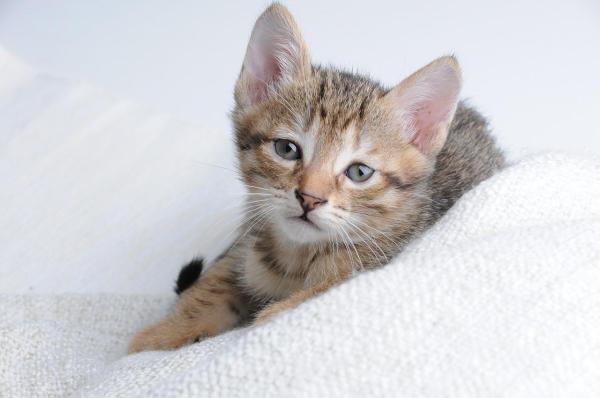
How to take my cat's temperature
If we observe our cat has some or all of the above symptoms, then the only way to confirm they have a fever is to take their temperature. To do this, you will needs the following items:
- Digital rectal thermometer which can be bought from any veterinary clinic
- Vaseline or similar lubricant
- Celan cloth or small towel
When you have these items ready, you can take your cat's temperature by following these steps:
- Clean the thermometer well and cover the tip with a little petroleum jelly (Vaseline) or similar lubricant.
- Ensure the cat's movement is restricted, ideally with another person to hold the cat firmly by the front legs.
- Carefully lift the cat's tail so that you are able to insert the tip of the thermometer in their rectum.
- When you notice the digital thermometer stops counting and reaches a steady temperature, remove it and note the amount in degrees. Reward your pet for their good behavior (even if they have been understandably antsy) and clean the thermometer well.
We stated above, the normal temperature for a cat is between 38ºC and 39.5ºC (100.4ºF and 103.1ºF). Adult cats will usually have a maximum temperature of 39ºC and kittens will be about 0.5ºC higher. If your cat exceeds this amounts, we can consider them feverish and we should provide appropriate treatment. If your cat has a temperature of over 41ºC (105.8ºF) then you need to take them to the vet immediately so a cause can be determined and treatment commenced.

Treatment to lower a cat's fever
The treatment of a cat's fever is closely linked to its underlying cause. For example, if your cat has a fever as the result of taking a certain medication, you should consult with a veterinarian as to what to do. You should not, however, decide to stop administering the treatment as it can have serious consequences in their recovery. If the cause is a serious illness such as leukemia, distemper (from feline parvovirus) or cancer, the vet specialist will initiate the best course of treatment to eradicate the pathology where possible. For minor bacterial infections, they may prescribe an antibiotic. Remember, you should not self-medicate your cat. Many medications designed for human consumption are toxic to cats and will only make their ill health worse.
In milder cases such as the common cold, you can take some measures and home remedies to reduce your cat's fever:
- As one of the symptoms of fever in cats is dehydration, it is important to ensure they are properly watered. If they do not want to drink, you may need to take an oral syringe and give them the amount of fluid they need. You must do this very carefully and slowly, you do not want your cat to drown. The water must also be fresh as it may promote further ill health in an already compromised immune system.
- With fever in cats, the same problem happens with food. To avoid malnutrition, you must encourage your cat to eat by providing food that meets their nutritional needs. At the same time, you need to ensure it is palatable. To do this, opt for using a wet food. Once recovered, you can combine it again with dry food. If the fever is accompanied by vomiting and/or diarrhea, you must consult a vet on providing an appropriate diet during this time.
- Find a place in your home which is warm and free of moisture and place the cat's bed there. Your cat should feel as comfortable as possible to promote their recovery.
- Cold compresses can be a useful ally in reducing your cat's fever. You must moisten a cloth or small towel with cold water and place them on their forehead. Let them act in cooling down the cat for a few minutes them remove. You can repeat this process on their legs and abdomen for similar results. Dry the wet areas and repeat up to twice a day if necessary. This many not directly reduce your cat's fever, but it can make them feel better and promote recovery in a general way.
If the fever has not subsided after 48 hours, you should go to the vet quickly. It is possible you have not yet been able to properly observe other symptoms and the cat is developing a serious disease which requires professional medical treatment. This is because it takes a specialist to examine your pet, diagnose the cause and prescribe the appropriate treatment.

Prevention is the best treatment
As we have seen throughout this article, fever is a symptom of an underlying pathology which can be either severe or mild. For this reason, the best treatment is always prevention. To prevent disease, infection and other health problems. It is essential to follow the mandatory vaccination schedule of your home country, make routine visits to the veterinarian and provide our cats with the basic care they need. This includes proper nutrition, toys to help release accumulated energy, scratching posts, brushing their coat to avoid hairballs, comfortable place to sleep and a litter box for their sanitation needs. Of course, providing them with lots of love and care will help their psychological well-being as well as their physical health.
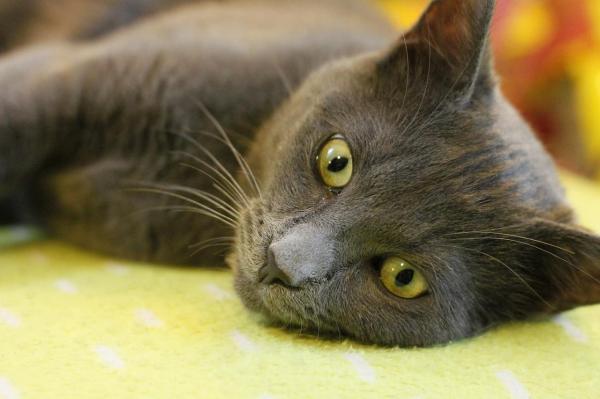
This article is purely informative. AnimalWised does not have the authority to prescribe any veterinary treatment or create a diagnosis. We invite you to take your pet to the veterinarian if they are suffering from any condition or pain.
If you want to read similar articles to Fever in Cats, we recommend you visit our Infectious diseases category.





